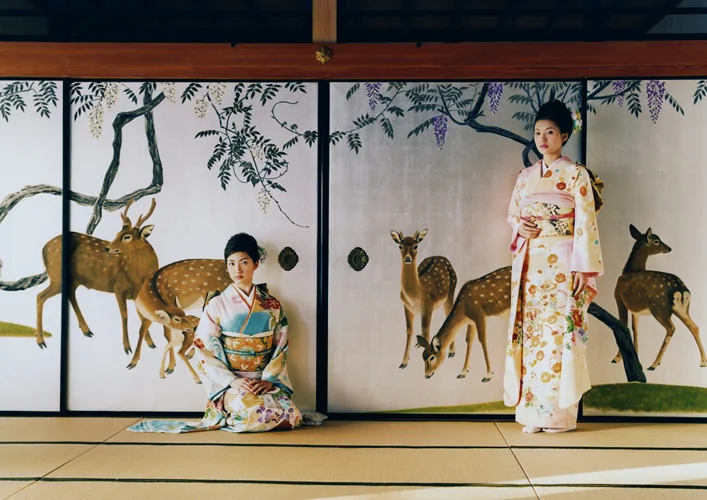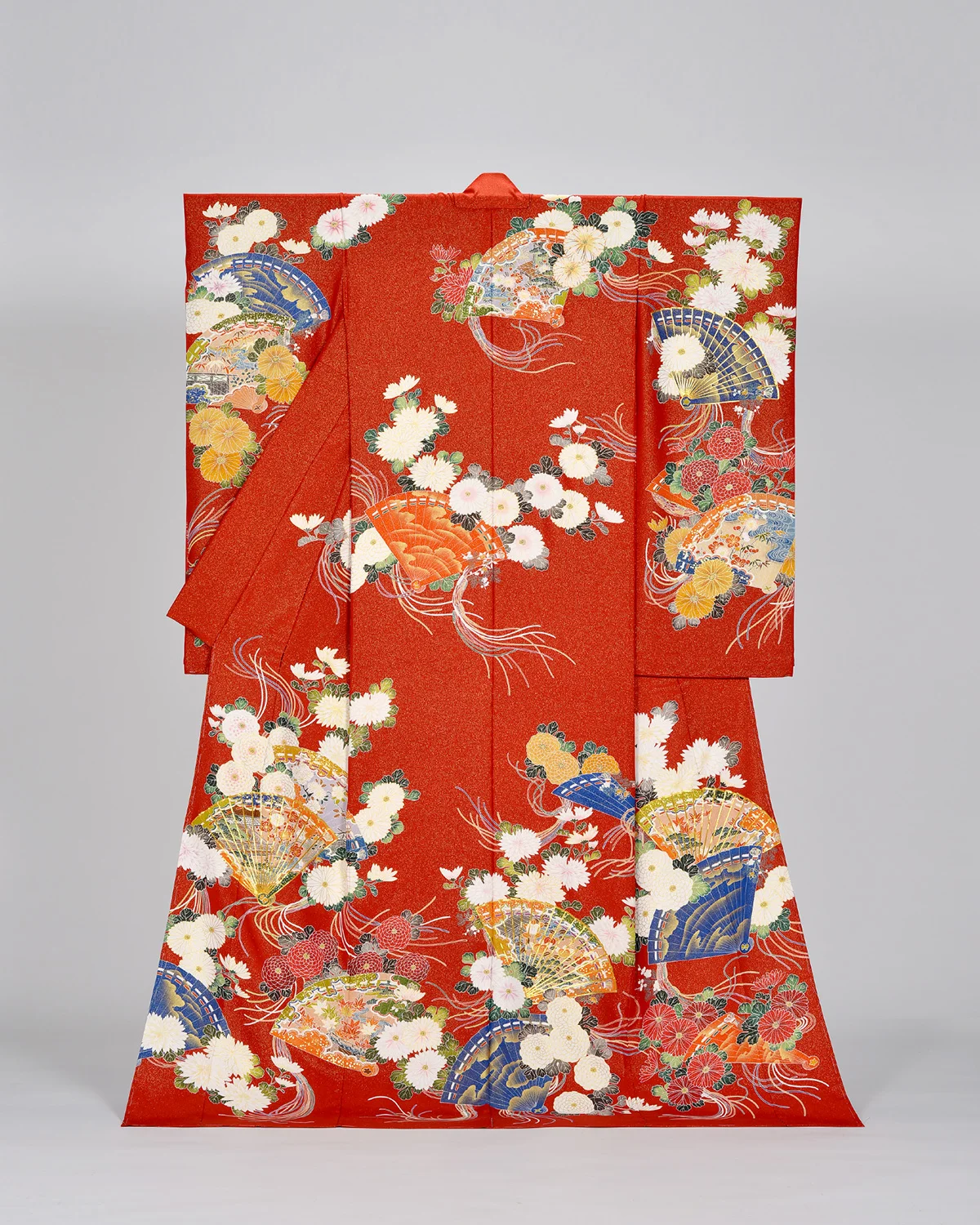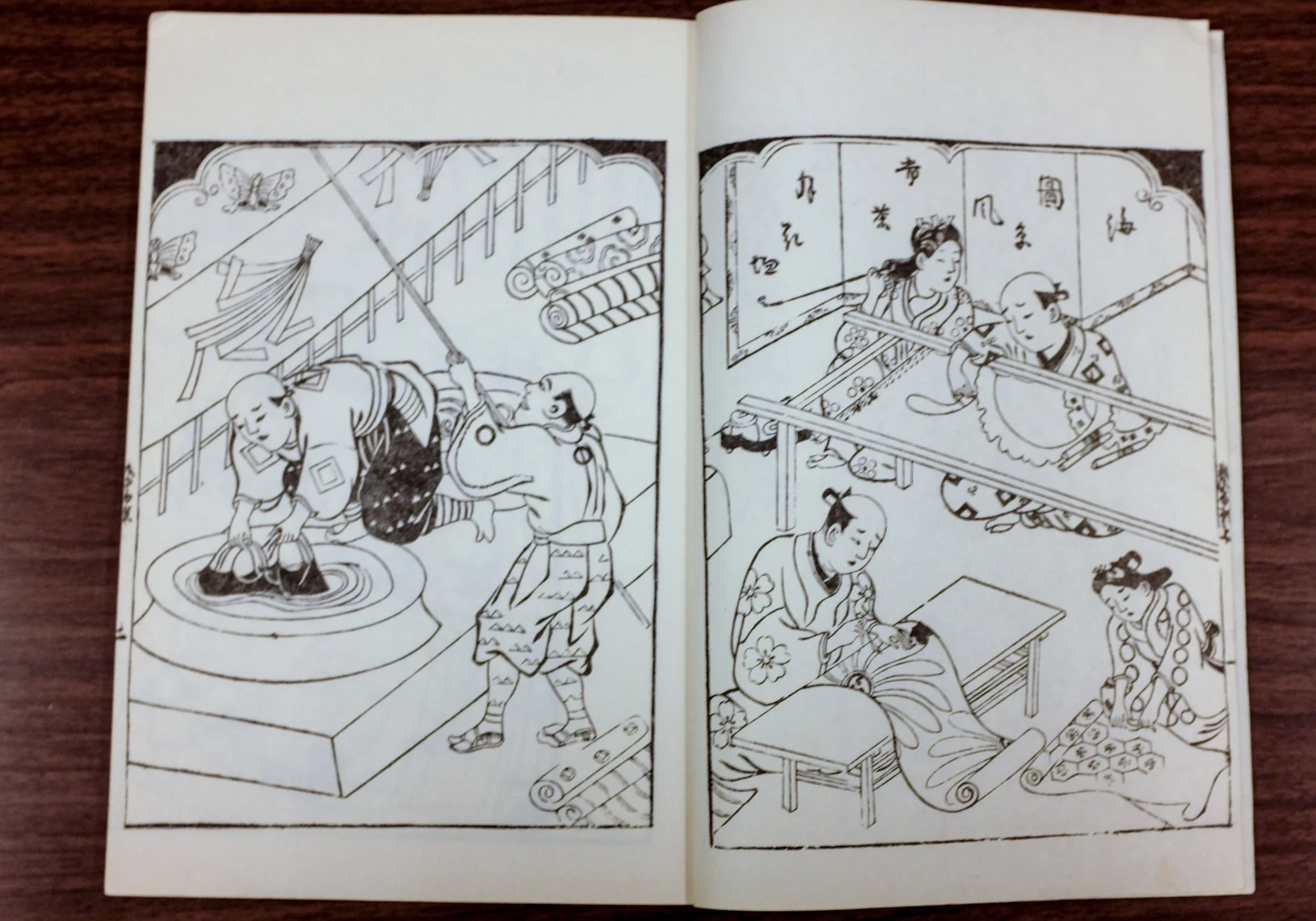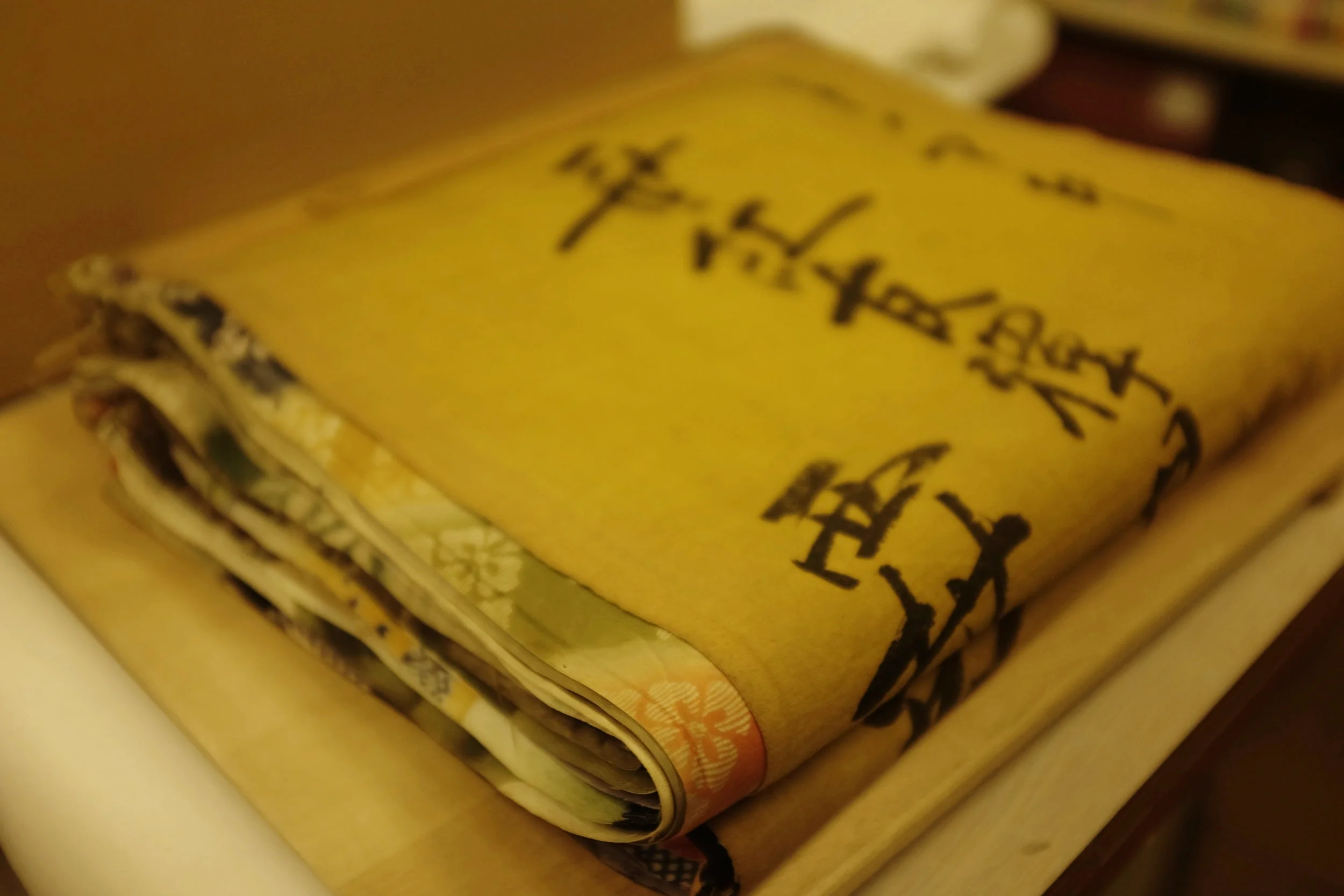Following a whirlwind visit to Kawaguchi and Itchiku Kubota’s museum, I arrived in Kyoto ready to spend my week with craftsmen of Kyoto. One of the oldest and most revered kimono manufacturers in Japan’s history, Chiso was established in 1555 within Kyoto – the capital at that time. Chiso’s production manager, who guided me through each stage of the kimono making process, graciously hosted me.
Chiso represent the higher or ‘couture’ level of kimono. They create the garments used to this day for special occasions – weddings, Shichi-Go-San ceremonies (for boys of three and five years and for girls of three and seven years), Seijin-Shiki - the ceremonious moment of entering adulthood. Many of the kimono are deeply worked upon: rich in multi-layered hand rendered processes by artisans in small factories or homes.
From the 2018 Chiso Wedding kimono collection
Chiso are renowned for their very fine Kyo-Yuzen designs, retaining the entire process within Kyoto and with craftsmen who have mastered their techniques from Chiso-associated predecessors.
Kyo-Yuzen is a method of applying dye directly to the cloth, invented during the Edo period (towards the end of the 17th Century). The control this process of rice paste resist and painted dye allows meant it quickly became the superior method of kimono decoration, despite the lengthy time and as many as 26 stages to completion.
At the offices of Chiso HQ in the centre of Kyoto, I was introduced to the staff and directors and then taken through the designers office, where they diligently worked on the next collection on thin papers with soft charcoals and finally into the archive room. Within the archive I was given free time to browse and sketch, ready to take the drawing to the resist craftsman and try my hand at Yuzen under their direction.
Within the rolling stacks were reference books on Japanese design, Asian design and included a ‘western art’ section. There was one selection filled with discreet A5 sized ‘facsimile’ books, which particularly caught my eye. Here were Chiso’s Edo period (1603-1868) kimono catalogues. Distributed to ateliers and esteemed clients, these catalogues were black ink drawings representing not just the newest kimono designs of the season, but also included illustrations of fashionable women displaying the newest trends and the newest hairstyles. The production manager described it as Edo “Japan Vogue”.
A page from one of Chiso’s Edo period kimono catalogues, showing many of the Kyo Yuzen processes including dyeing, resist paste and painting
Kimono yuzen design sample book - collection from the 1800s
Across the opposite wall were photocopies of every fabric sample produced in the past 500 years. As their extensive archive includes over 20,000 items including 150 Kosode (a garment for both men and women) from the era of Edo to Meiji (1868 – 1912) is a valuable and large collection, they have a separate building for it’s safekeeping. So, instead, they have folders filled with these colour photocopies and several of the fabric sample bundles. These samples are bound in yellow cloth and painted with the date of that season’s group. While looking through the perfectly preserved vibrant colours, I was told they were from the early 1800s. As much as this is due to their careful covering and protection from light, it is also reflective of the period in which they were made. It was around this time that Chiso adopted the innovative synthetic dyes, making their process speedier and the colours lightfast.
Tomorrow will take me to three locations - the Yuzen resist, oke shibori and shibori dye craftsmen.





